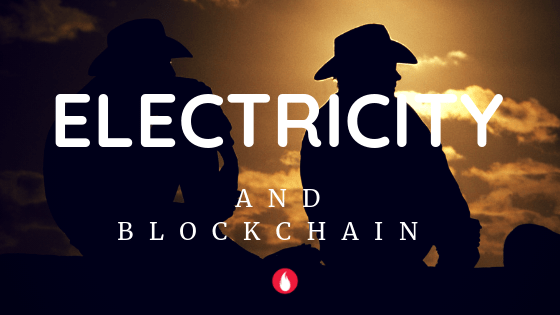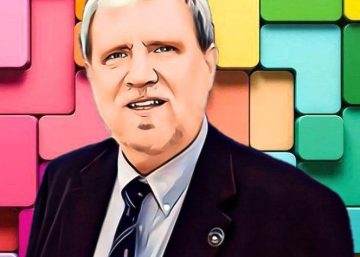Visa, the worlds leading payment processing firm, processes 1700 transactions in a second. They do it in a matter-of-fact manner, within a blink of an eye. Blockchain, through the Bitcoin network, process SEVEN transactions in a second, yes seven. Which is why, the protests and US Congressional hearing even, sounded like an overreaction from an already paranoid world. The world, according to Gartner, is in the trough of disillusionment with Blockchain. Blockchain and electricity, need closer examination and greater understanding.
How much electricity does Blockchain consume?
Is it disillusionment or does Blockchain indeed consume unwarranted amounts of electricity?
A cursory search on Google. 6.5 million U.S. households could be powered by the energy consumed operating Blockchain (2017). A more recent study puts it closer to the electric power consumed by Ireland or New Zealand. It got worse, pundits predict this figure could rise to 7.7GW before the end of 2018. That is 0.5% of the electricity consumed by the entire world!!
In a world strained of natural resources, this is a fair lot.
Why would Blockchain need this enormous supply of electricity? This question sent us on the road of conversations and exploration. The creators of Blockchain, Satoshi Nakamoto, introduced a framework which uses proof of work or solving puzzles to confirm transactions. This type of validation prevented malicious attacks and double counting. Critical to establishing trust in the network without the need for a middleman or authority.
Blockchain’s need for Electricity
Why would solving puzzles on the computer, or in Blockchain terms ‘Proof of work’ need enormous amounts of electricity? Here is an analogy for the processing transactions on a Blockchain.
Imagine a teacher who gives a puzzle to a class of 5th graders (50 kids in her class). She promises them a coin as a reward for solving the puzzle. Each of them is hard at work, pen and paper in hand, trying to crack the puzzle and win the coin. The child who solves the puzzle first, jumps up and down, raising his/her hand. The teacher examines it for accuracy, certifies it as CORRECT. She rewards the child with the promised coin! Think of all the other kids in the class who also worked on the same puzzle but were not the first to solve it. The amount of energy spent on solving one puzzle thus is: 50*effort to solve the puzzle. 50 times the effort!
This is how Blockchain works as well. A transaction occurs. All the miners across the world are trying to solve the puzzle and generate the hash. While the kids worked with pen and paper, the miners work with powerful machines. The reward for solving the puzzle currently is 25 Bitcoins + costs involved. The first miner who gets the puzzle right and forms the block wins the coins. The electricity consumed by the other miners is unfortunately superfluous. This manner of creating blocks is the Proof of Work, method.
Proof of Work gives Blockchain the enhanced security feature. Proof of Work also gives Blockchain the ability to remove middleman. Yet it results in Blockchain being accused of consuming enormous electricity. Processing one transaction can instead power an American household for an entire week!
Blockchain and Electricity.When it started…
Did the creators of Blockchain foresee the enormous waste of natural resources? Satoshi Nakamoto has a robin hood feel to them in Blockchain folklore. One(s) who were tired of being at the mercy of big corporations being hand in glove with governments. Anecdotes say that blockchain resulted from the disillusionment of the Lehman Brothers crash in 2009. An alternative for us. Did they disregard nature?
Apparently not. Satoshi insisted and urged the initial users of Blockchain to stay away from powerful computing machines. The potential damage was known. Therefore a wider adoption of Blockchain to enhance security was sought. The initial bitcoins were mined on good old Pentium 4 processors or home computers. This Gentleman’s agreement, to not use powerful equipment to mine, held firm till 2013. The soaring price of a bitcoin and greed got the better of us. GPU’s entered the game. Now we have moved to fancy mining rigs.
Some loyalists say the energy estimation of Blockchain is overstated. Maybe. This technology has the power to usher in change and a new way of working for the world. Technology and change carry the responsibility of ensuring sustainability. As Blockchain moves into the spotlight, it must deliver at the intersection of people, change and technology to be relevant, sustainable and to make change meaningful. If that means adopting the Proof of Stake method, which is being experimented with, so be it. If it means waiting to see what the silicon valley firm Splend seems to have solved in stealth mode, so be it. Stay tuned.
The Blockchain journey has just begun.
Earlier attempts on understanding Blockchain are below.




May 18, 2019, 3:02 pm
June 1, 2019, 9:19 am